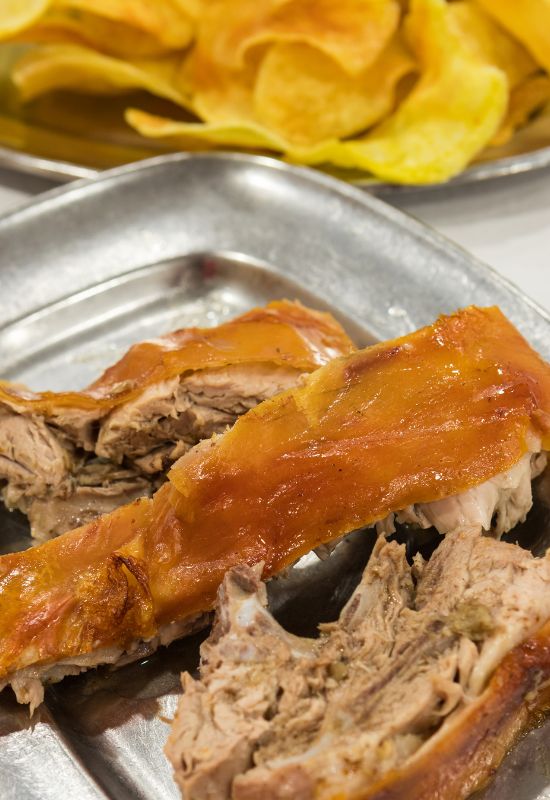If you love good food, the only thing for sure is that the Messinian cuisine will drive you crazy. Local specialties that could take part in global dish competitions, but even simple everyday recipes from hands that know well how to offer a palate the maximum pleasure. Fish or meat, ladera or appetizers, whatever you try is excellent.
Kyparissia, this picturesque town that stretches near the coast of Messinia, hides a treasure of flavors and aromas that simply take off the culinary senses. Those who dare to indulge in the magic of this local cuisine will discover an incredible variety of traditional dishes and specialties that exude authenticity and taste. Let’s travel together on this culinary experience that will leave your palate happy and your soul satisfied.
Savory and sweet flavors that you must try
#1 Squids stuffed with trachana
Let’s start this culinary journey with a dish that combines the local seafood flavor with the harmonious notes of traditional farm ingredients. The calamari stuffed with trachana are a salty dream that will captivate you. The mild taste of squid is combined with the rich flavor of trachana, a traditional Greek flour made from wheat and milk. The first bite will take you to another era, where simplicity and taste erase every other thought and invite you to enjoy every moment.
#2 Manura with mutton
Kyparissia is known for producing high-quality mutton, and manoura with mutton is a dish that is a testament to this top quality. The combination of aromatic provolone with the rich meaty taste of mutton will captivate you. The dish is served with French fries and spring onions, adding more nuances of flavor and texture. Every bite is a manifestation of authentic Greek cuisine and will leave you with the feeling that you are experiencing something truly special.
#3 Kalamakia Messinia
Don’t let the classic dish of the Kalamakias of Messinia go unnoticed. These are beef marinated in a secret herb and spice sauce, then grilled over charcoal. These straws are so soft and juicy that they melt in your mouth, leaving behind the aroma and feel of excellent quality meat. They are served with fresh bread and tzatziki, creating a delightful combination of flavors that will have you asking for more.
#4 Messinian milk pie
The Messinian milk pie or turkey pie, as we used to hear it from our grandmothers, is a traditional sweet, which is usually present on every table in the villages of Messinia on Easter Sunday or Monday. This is an extremely easy recipe, but at the same time delicious. Contains fresh milk, fine semolina, butter, eggs, sugar and olive oil. A sweet that the women of Messinia will surely kiss you on Easter days and beyond.
#5 Kayanas with salted pork and spelea
Who would visit Messinia and not taste the delicious kayana in a traditional seaside tavern? Grated tomatoes, eggs, salted pork in pieces, Messinian fela in cubes, olive oil, fresh pepper and oregano are the ingredients that are fried and result in the most delicious Messinian kayana.
#6 Messinian doubles
Everyone knows and certainly everyone has tasted the traditional Messinian diples that are never missing from weddings and baptisms, but also from every joyful event in our country. Diples contain eggs, flour, sugar, salt, honey, walnuts, cinnamon, lemon juice and olive oil. No one will leave the place of Messinia without getting a box of traditional doubles!
#7 Pasta with burnt mizithra and oil
Any Messinian woman, if you ask, will tell you about this simple and traditional pasta that has never been missing from the Messinian diet for many years. A wonderful pasta that you can probably taste in some traditional restaurants with local recipes in Messinia.
#8 Petoules of Messinia
Messinian petoulas are the modern version of the crepe. All the traditional women of the Messinian villages will know the delicious petoulas. They are made from flour, milk, butter, eggs, salt and olive oil for frying. They are wrapped in rolls and contain mizithra in their filling.
#9 Crispy sour with red sauce
For many years, all the women in the villages used to gather at home for the traditional preparation of trachana. In the evening they boiled the milk with the salt, stirred it until it was well dissolved, added the semolina and left it all night, until the milk was absorbed and cooled. The next morning he was laid out on the bed in a dry and cool place on a clean sheet and cut into pieces that I had.





